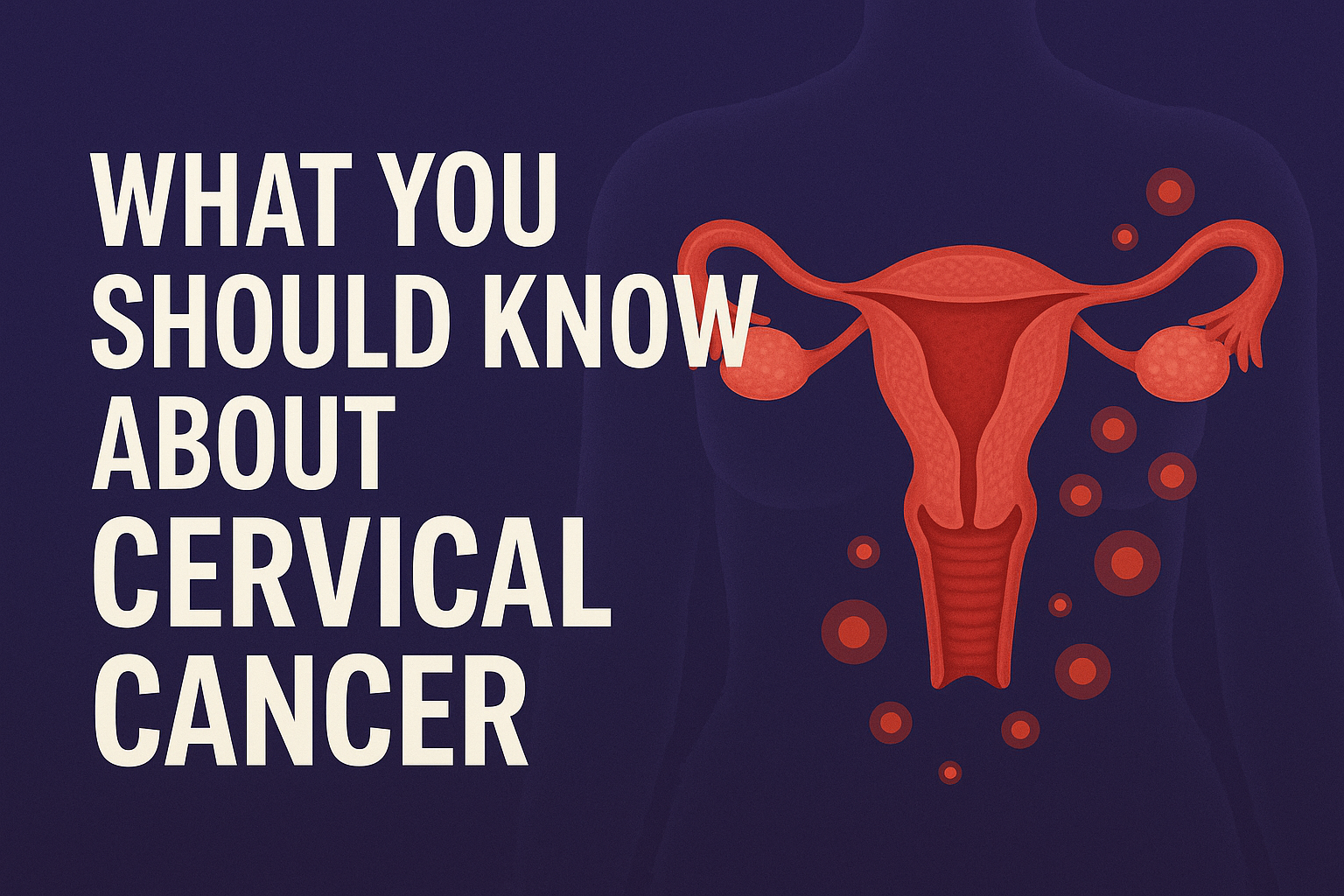Cervical cancer is one of the most preventable yet still deadly forms of cancer affecting women worldwide. Thanks to widespread screening and HPV vaccination programs, early detection is more accessible than ever. However, understanding the disease, its risks, and prevention strategies remains critical to reducing its impact.
What Is Cervical Cancer?
Cervical cancer begins in the cells lining the cervix — the lower part of the uterus that connects to the vagina. Most cases are linked to persistent infection with high-risk types of the human papillomavirus (HPV), a common sexually transmitted infection.
There are two main types:
- Squamous cell carcinoma: Arises from the flat, thin cells on the outer part of the cervix (most common)
- Adenocarcinoma: Begins in the glandular cells lining the cervical canal
Early Symptoms of Cervical Cancer
Cervical cancer in its early stages may not cause noticeable symptoms. When signs do appear, they may include:
- Abnormal vaginal bleeding (after sex, between periods, or after menopause)
- Unusual vaginal discharge
- Pelvic pain or pain during intercourse
- Longer or heavier menstrual periods
Major Risk Factors
The main risk factor for cervical cancer is persistent infection with high-risk HPV types. Other risk factors include:
- Early sexual activity
- Multiple sexual partners
- Smoking
- Weakened immune system (e.g., HIV infection)
- Long-term use of oral contraceptives
- Lack of regular Pap tests
Screening and Early Detection
Routine screening can detect precancerous changes before they turn into cancer. Recommended screening methods include:
- Pap test (Pap smear): Detects abnormal cervical cells
- HPV test: Identifies high-risk HPV infections
Screening typically begins at age 21 and continues regularly through age 65. HPV testing may be done alone or in combination with a Pap test (co-testing).
Prevention Strategies
Cervical cancer is largely preventable with these measures:
- HPV vaccination: Safe and effective for girls and boys, ideally before age 15
- Regular screening: Pap and HPV tests detect problems early
- Safe sex practices: Using condoms and limiting sexual partners
- Quitting smoking: Reduces risk of cervical and other cancers
Treatment Options in 2025
Treatment depends on the stage and individual circumstances, and may include:
- Surgery: Removal of cancerous tissue or hysterectomy
- Radiation therapy: Often combined with chemotherapy for advanced stages
- Chemotherapy: Uses drugs to kill cancer cells
- Targeted therapy and immunotherapy: Newer treatments targeting cancer growth or boosting immune response
Early-stage cancers have high cure rates, especially when treated promptly.
Living With Cervical Cancer
A cervical cancer diagnosis can be overwhelming, but support is available. Survivorship programs, counseling, and patient support groups can help women navigate treatment and recovery.
Fertility preservation, sexual health, and mental wellness should all be part of the care plan, particularly for younger women.
Final Thoughts
Cervical cancer is highly preventable and treatable when caught early. Regular screenings, HPV vaccination, and education are the most powerful tools in reducing cases and saving lives. Every woman should take proactive steps to protect her cervical health.
Related Articles:
- “Understanding the HPV Vaccine: What Parents Should Know”
- “Pap Test vs. HPV Test: What’s the Difference?”
- “Tips for Coping With a Cancer Diagnosis”
